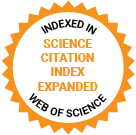Journal of Medical Internet Research
The leading peer-reviewed journal for digital medicine and health and health care in the internet age.
Editor-in-Chief:
Gunther Eysenbach, MD, MPH, FACMI, Founding Editor and Publisher; Adjunct Professor, School of Health Information Science, University of Victoria, Canada
Impact Factor 6.0 CiteScore 11.7
Recent Articles

Exposure therapy effectively treats anxiety disorders but faces implementation barriers including cost, time constraints, and reluctance from therapists and clients. Virtual reality exposure therapy (VRET) offers a controlled digital alternative addressing these issues. However, adoption remains limited, with previous studies focusing mainly on hospital settings without considering individual or workplace factors.

Digital health interventions can enhance sexual health equity among marginalized and underserved populations, including displaced youth. However, there is limited understanding of displaced youth’s digital health literacy (DHL) and its association with knowledge of and access to sexual health products and services.

The Special Supplemental Nutrition Program for Women, Infants, and Children (WIC) is a federal nutrition assistance program for low-income, food-insecure mothers and young children in the United States. Despite its intended goals, many eligible individuals forgo WIC benefits, in part due to administrative burden – defined as the complex, often frustrating processes encountered when navigating public benefits programs. In response, a range of digital interventions and policy waivers were introduced during the COVID-19 pandemic, but their effectiveness in reducing barriers remains unclear.

Healthcare technology adoption is key to improving patient care, enhancing operational efficiency, and ensuring better health outcomes. Examining the determinants that influence the acceptance and sustainable use of healthcare technologies is crucial for system developers, healthcare providers, and policymakers. The Unified Theory of Acceptance and Use of Technology (UTAUT) and Task-Technology Fit (TTF) theoretical models offer a comprehensive framework to assess these determinants systematically, with UTAUT focusing on usage intentions and TTF emphasizing task-technology alignment for system usefulness, usability, and satisfaction.

Digital health interventions are increasingly promoted as scalable and cost-effective approaches to support mental health and resilience. Short-term benefits are well documented, but evidence on long-term outcomes (beyond 12 months) remains scarce, particularly when assessed with objective measures in large cohorts. Most studies to date have focused on small samples, relied on self-reported outcomes, and follow-up periods of less than a year. This leaves uncertainty about whether early changes are sustained over time and can be observed in objective indicators of health. This gap is particularly relevant for stressful life transitions, where the risk of long-term adverse health outcomes is high. Divorce, a common and stressful transition linked to poorer mental and physical health, thus provides an ideal case for investigating the long-term potential of digital health interventions.

Data collected in controlled settings typically results in high-quality datasets. However, in real-world applications, the quality of data collection is often compromised. It is well established that the quality of a dataset significantly impacts the performance of machine learning models. In this context, detailed information about individuals is often recorded in progress notes. Given the critical nature of health applications, it is essential to evaluate the impact of textual data quality, as any incorrect prediction can have serious, potentially life-threatening consequences.

Cisgender lesbian, bisexual, and queer (LBQ+) women of color (WOC) experience barriers to accessing sexual and reproductive health (SRH) services in the United States (US). Barriers, including limited provider access and poor patient-provider communication, contribute to underutilization of SRH services and poorer outcomes compared to heterosexual counterparts. Digital health modalities, including telemedicine, mobile health, and artificial intelligence (AI)-enabled chatbots, offer potential to expand access to SRH information and services among LBQ+ WOC.

Digital health technologies (DHTs) have the potential to revolutionize the screening, diagnostic support, monitoring and intervention for early cognitive change. However, the full spectrum of their application and the existing evidence base in this specific patient population have not been systematically delineated.

The COVID-19 pandemic has transitioned into an endemic phase with heterogeneous resurgences. Despite widespread vaccination and public health measures, the interplay of viral evolution, population immunity, and environmental factors drives diverse global patterns of COVID-19 burden. However, how these systematic factors dynamically shape disease transmission and severity across populations remains incompletely understood.

Digital therapeutics (DTx) for children and adolescents with mental health problems have been developed in the health care industry. Despite reports of side effects from DTx for children and adolescents, there have been no guidelines to address the prevention of DTx overdependence among young users.
Preprints Open for Peer-Review
Open Peer Review Period:
-
Open Peer Review Period:
-
Open Peer Review Period:
-


















